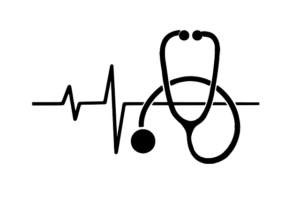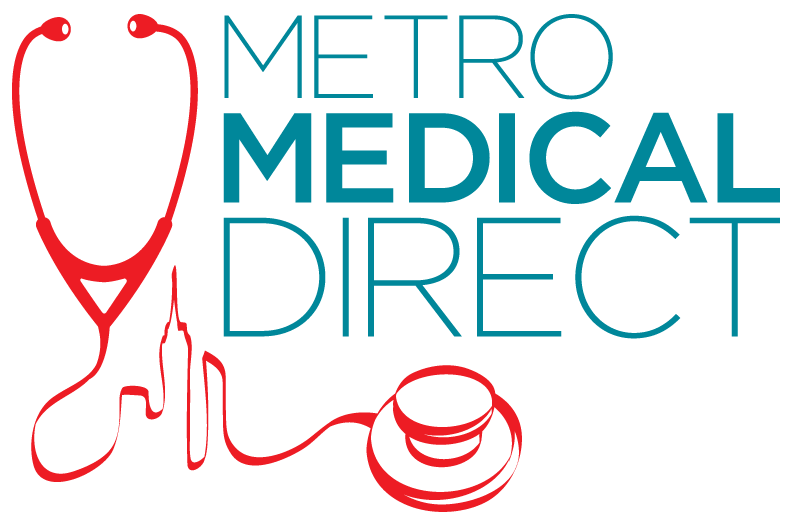
Since the hospital admissions of COVID 19 declining each day, and the ICU census continues to decline. Hospitals have demonstrated their ability to scale up: I propose the following path to reopening for business:
Healthcare going forward and reopening after COVID 19:
- Just as most healthcare institutions require their healthcare providers to be trained in Basic Cardiac Life Support every 2 years further require training in Advanced Cardiac Life Support AND the Fundamentals of Critical Care Support as offered by the Society of Critical Care Medicine.
- Train RNs, Respiratory Therapists, and physicians in point of care. Also bedside ultrasounds and do away with the stethoscope.
- Hospitals should develop negative pressure tent contingency plans in the case of local epidemic outbreaks.
- All patient care rooms have telehealth capabilities, and in-house consultancy services develop remote access capabilities to reduce unnecessary foot traffic through patient care areas. Physical examines only when necessary.
- All health care providers should wear surgical masks or N95 when caring for patients.
- Visitors to healthcare institutions (hospitals, nursing homes, clinics, offices, etc.) and patients should wear surgical masks upon entering the common areas.
- Hand washing among healthcare workers should be strictly enforced and a chart notation should be made on every encounter if hand washing was done just as we are requiring notation as to the patient’s preferred language and if an interpreter was used.
- All healthcare workers wear scrubs which are not worn outside the hospital unless covered
- aggressive lab coat laundering
- Neckties are strictly prohibited for any patient-facing health care providers.
- Initially, reopen outpatient elective healthcare practices, birthing centers, dental offices, dermatology, plastics, free-standing procedure, and surgical centers that are known not to necessitate a hospital admission (to maintain/ retain hospital bed capacity and ongoing construction efforts for a turnkey pandemic response i.e. Murphy bed style expanded ICU capabilities).
- Also, hospitals receiving government funds should have a pandemic response plan in effect that should be integrated into daily operations to some degree.
Outpatient care
- First, retain, maintain, and use telehealth for potentially all cold and flu-like symptoms. This will reduce fomite transmission to the vulnerable person entering the health care environment. Virtual urgent care, visits, and web-camera follow-up visits for problems that do not require a hands-on physical exam.
- Virtual health kiosks are similar to ATMs throughout the regional area to reduce unnecessary crowds in the emergency departments.
- Freestanding/hospital-affiliated offices for blood work, and radiological imaging with extended hours so that community providers can send electronic prescriptions to these places to facilitate telehealth workups thereby exposing the patient and community as little as possible to communicable disease spread. (Prepandemic: It was not uncommon for physicians to send their patients to the ER due to closed offices, or quick test results).
- Any patient managed for chronic pulmonary condition or panic attack is trained in pulse oximetry monitoring, incentive spirometer, and peak flow monitoring.
Personal Responsibility
- If you are high risk or vulnerable wear an N95 mask when you are out and about.
- Consider self-quarantine during times of increased risk
- Practice proper hand hygiene
- Carry hand sanitizer
- If you are symptomatic or highly conscientious wear a surgical mask/ covering when out and about.
- If you are symptomatic do not go to school or work
- Finally, consider removing handshakes from standard greeting and adopt another form such as a head nod, bow, salute, or pat on the back. I would avoid fist and elbow bumps as we are all coughing and sneezing into them now.
Government-controlled areas and buildings
- Bring back and ramp up production of medications, personal protective equipment, ventilators, and other vital resources to the United States prescribing across state lines (if the patient establishes a relationship in the home state and travels they should easily be able to have their health care provider prescribe/ continue to treat them where they have traveled to not unnecessarily burden the local healthcare system).
- Allow Nurse Practitioners and Physician Assistants to practice to the full scope of their training reducing the arbitrary regulations under the guise of patient safety. This increases the volume of trained healthcare providers at the ready and connects more people to care.
- Continue to stockpile the strategic reserves of essential medical supplies, tent hospitals, medications, etc., and National Guard medical response readiness for coordinated pandemic and mass casualty response.
- Also, implement the use of electronic hands-free doors, sinks, and hand sanitizer dispensers
- Make Surgical Masks available at entrances to elevators, and in crowded areas.
- Hands-free elevators with floor markings suggesting where to stand to reduce excessive crowding
- Open State and Federal parks and beaches simply encourage social distancing of non-communal groups (families, roommates, etc. can be near each other).
- Open up construction to allow for the implementation of these suggestions and other necessary pandemic response resilience initiatives.
- Construction should include private homes that want to install saunas, steam rooms, hot tubs, and cold plunge pools (research has shown these activities consistently boost the immune system and reduce the incidence of flu-like and common cold infections and symptom severity). Also, encourage landscaping that plants trees, bushes, shrubs, etc. as “forest bathing” also boosts immunity.
- Include in the public high school curriculum EMT –Basic training for national disasters. A mobilized and trained volunteer force frees up healthcare professionals.
Businesses
- Allow food trucks to open for business and encourage take-out and drive-through options as this will encourage dining out again and allow people to regain livelihood. Incentive electronic ordering through mobile apps thereby decreasing lines and crowds.
- Open hair and nail salons, and spas, bathhouses that have saunas, steam rooms, hot tubs, cold plunge pools. Workers worried about exposure can wear N95 masks.
- These services can also be delivered privately in the form of a house call should it be feasible.
- Any Private business can require their workers to wear N95 masks and or visitors to reduce the risk of transmission from asymptomatic patrons etc.
- Private businesses can require patrons to wear a face mask while shopping. Patrons are free to choose where to shop.
- Require immunizations or titers to attend any school or university.
- Private Employers and Public Venues can decide what degree they require for mitigation strategies.
- The health centers and school nurses’ offices should have point care testing readily available. This includes Respiratory Pathogen Panel, SARS-CoV2, Influenza, and Strep swab testing.
- Allow tests on students or employees with cold or flu symptoms.
- Train Paramedics and EMTs in point of care tests for calls with respiratory infection symptoms.
- Students (parents) and Faculty can choose to wear or not wear a surgical mask or N95 mask while at school
- Insurance Providers should require antibody and titer testing for communicable diseases. We currently vaccinate against and Covid 19.
- Also, those not seroconverted should have immunization costs covered.
Most of the above should open on Memorial Day weekend. After about 14-21 days (the longest known incubation period) they can open the rest of the economy. Here are the following measures:
Public Gatherings after COVID 19
- Private venues can require patrons to wear face masks or coverings in sporting, theater, and convention venues
- The vulnerable remain personally responsible for self-quarantine.
- Bars, Restaurants, Coffee shops, Cigar lounges: Waiters and Bartenders should consider wearing N95 masks but not patrons.
Lastly, we will never fully know the psychological toll fromCOVID 19. There will also be far-reaching consequences from the loss of livelihood, life purpose, and social isolation. Eventually, herd immunity will develop and the group thinks mass hysteria should subside. That assumes people can reduce their consumption of 24-hour news updates.
About Metro Medical Direct
Dr. Raymond Zakhari is the owner and operator of Metro Medical Direct and provides Telehealth and in-home visits. He also provides in-home alcohol and drug rehabilitation. Book an appointment here and check out the rest of this site for more information about concierge medicine.
Also, check out Dr. Ray’s Podcast The Psychology of it All here. Also available on Apple Podcasts.

0 Comments